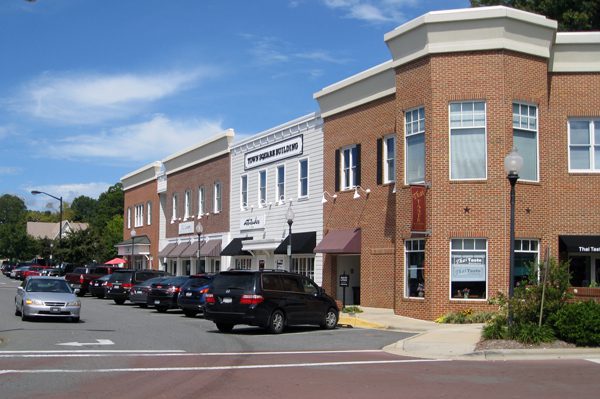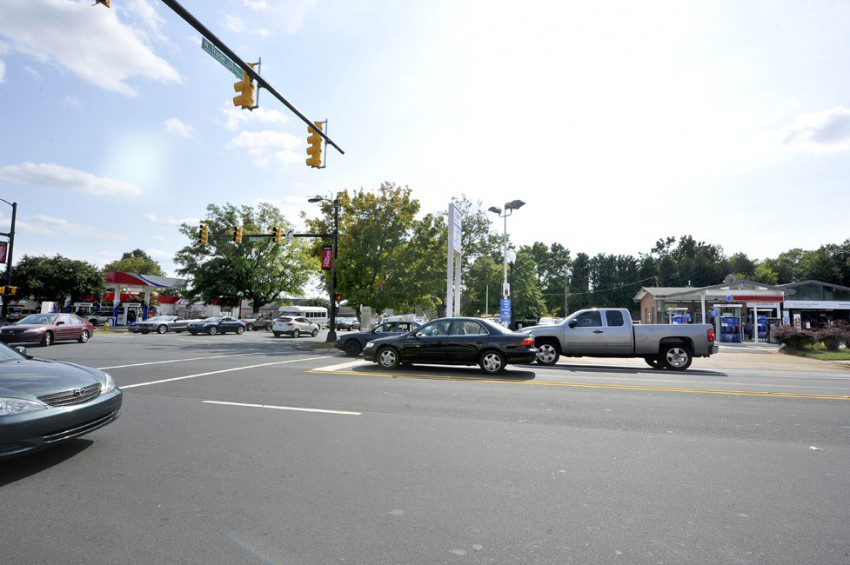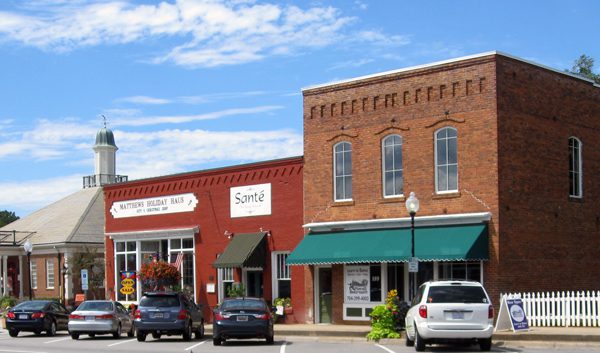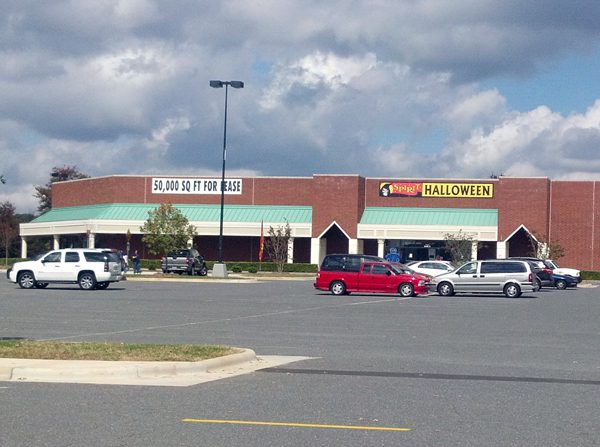Matthews at the crossroads: Can it grow up, instead of just grow?

When I moved to Charlotte more than 30 years ago, Matthews was the suburb. It lay directly in the path of the major growth trajectory – southeast. The drive to central Charlotte was a reasonable 25-30 minutes. The cute, but miniature, downtown Matthews and a few surrounding blocks of turn-of-the-century houses gave a historic feel and sense of small-town identity to a place that, in fact, was accumulating mostly standard subdivisions and strip shopping centers.
Today, if you drive into the center of Matthews you come to the town’s historic main intersection. Look to the left up Trade Street and you’ll see a two-block long, walkable old downtown of small-scale storefront buildings and just beyond it, shops built along a new street leading to a new Town Hall, all built atop the carcass of a faded, 1978 strip center. A few blocks farther on, a mixed-use group of apartments and stores is going up atop a new street grid.
But look to the right, and you see two gas station-convenience stores.
 There you have the dilemma of the American suburb that grew during the late 20th century: Which future to choose? Should it look right, to its immediate past – to the car-oriented way of life that brought growth and prosperity, but also already-fading shopping centers and highways that sever the town as they funnel commuters to newer, even more prosperous suburbs in the neighboring county?
There you have the dilemma of the American suburb that grew during the late 20th century: Which future to choose? Should it look right, to its immediate past – to the car-oriented way of life that brought growth and prosperity, but also already-fading shopping centers and highways that sever the town as they funnel commuters to newer, even more prosperous suburbs in the neighboring county?
That future might be viewed as ignoring the needs of the 27,000 people who now call Matthews home. It points to more shopping center carcasses and a steady lowering of property values as the housing stock ages and demographic and cultural trends propel more people toward center cities, with walkable neighborhoods and more urban – and urbane – experiences. Or should Matthews try to find a new, third way, seeking the right blends of respecting the old but aiming for something more suitable for a suburb that’s all grown up?
It’s a common story around the Sun Belt: Rural hamlet near larger town blinks and finds it’s now a booming suburb in the orbit of a much larger, sprawling city. Years of attracting people looking for a small town and a private getaway have built a fabric of large lawns and scattered houses, and more lawns and more houses. Where does a suburb go from here?
 Should Matthews look to its long-ago past, to the walkable but tiny downtown that grew from the railroad stop that birthed the town?
Should Matthews look to its long-ago past, to the walkable but tiny downtown that grew from the railroad stop that birthed the town?
I was asked recently to give a talk in Matthews, and as I researched its history and land use patterns, I realized one of its problems was that the town was not treating itself, in its physical form, as a substantial place. About the same time, I noticed something about the history of the mountain city of Asheville. Asheville built its now-beloved (and tourist-magnet) collection of 1920s Art Deco buildings in the 1920s, when the city’s population was – 28,000. In other words, it was essentially the same as Matthews is now, but it built a city.
Just an hour up I-85 from Charlotte, downtown Salisbury, (recently named by the American Planning Association as one of America’s 10 Great Neighborhoods) has a fine collection of multistory buildings dating to the early 20th century. Its population today: 33,000.
What might happen in Matthews if it tried to build an Asheville-style, or even a Salisbury-sized downtown?
Planning Director Kathi Ingrish told me the town treasured its historic buildings. “It has always wanted to retain its small-town ambience,” she said. But how realistic is that, not just for Matthews but for the hundreds of suburbs that might have begun life as hamlets but after 50 years of Sun Belt sprawl are now linked to much larger metro centers?
 Ingrish said Matthews town council members had expressed admiration for Cary, a vast suburb outside Raleigh that has grown into the state’s seventh largest municipality. It has such a suburban flavor that the Raleigh News & Observer recently ran an article about how some area residents can’t find, or don’t even know the existence of, its little downtown. Cary is also spending millions to try to make its downtown into a place people will want to visit.
Ingrish said Matthews town council members had expressed admiration for Cary, a vast suburb outside Raleigh that has grown into the state’s seventh largest municipality. It has such a suburban flavor that the Raleigh News & Observer recently ran an article about how some area residents can’t find, or don’t even know the existence of, its little downtown. Cary is also spending millions to try to make its downtown into a place people will want to visit.
Matthews elected officials have talked about wanting to “turn the Queen Mary.” After all, projections are for Mecklenburg County to grow by 380,000 people in the next 20 years – essentially adding the population of the city of St. Louis, or in N.C. terms the population of the cities of Greensboro and High Point combined. Where will those newcomers live? Will they want to live in Matthews? Will the town want them? Can it accommodate them and absorb them? Where will they shop? Work? What will this small suburb look like and feel like, if it absorbs another 15,000 or so new residents?
So, like that crossroads in the heart of its downtown, Matthews is at a metaphorical crossroads. So are many other such places in America, as they stare wonderingly at their future – which will be nothing like the past. The question is whether Matthews, or any suburb, can learn to behave like a substantial place. Can towns that grew up thinking small learn to act their size? If Asheville, population 28,000, could build an enduring treasure of a downtown in the early 20th century, why can’t a town of 27,000 aim to do the same in the 21st?
Opinions in this article are those of the author and not necessarily those of the UNC Charlotte Urban Institute or the University of North Carolina at Charlotte.